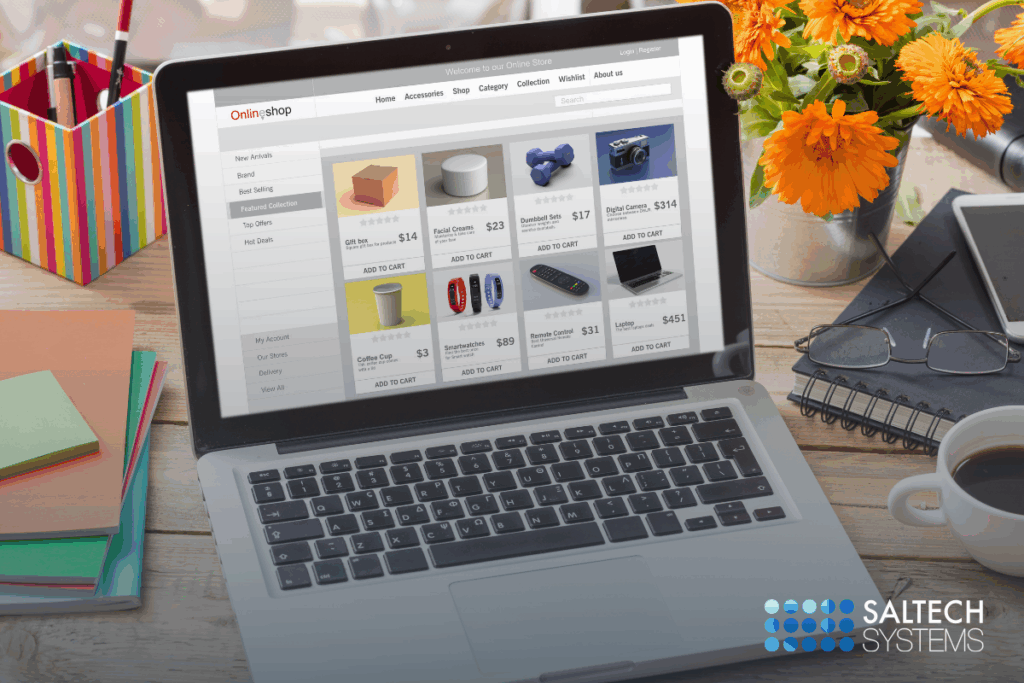The world is changing. Individuals are turning to digital tools for just about everything, including shopping. That’s where ecommerce websites come in.
The total worldwide online shopping market is expected to bring $5.5 trillion in sales to retailers in 2022.
Safe to say, there is money to be made by offering your products for purchase on the internet. If you have an established brick-and-mortar retail store, you can use your sales experience to expand to a wider audience. If you have a side hustle or hobby selling custom products on social media, maybe it is time to take it to the next level.
Regardless, the center of any online sales is a vital digital asset: the website.
We’re an Iowa web design company that specializes in professional, attractive websites. Below we’ve outlined just a few helpful tips for ecommerce websites.
1. Build Trust
There is no denying the shopper and the seller lose out on the personal connection when doing business online. However, online sellers can take steps to ensure the users still trust your brand.
Ecommerce sellers can build trust through professional web design and engaging content.
Users are considering the design of the website whether they realize it or not. Having an attractive website won’t just be easy on the eyes. It will likely drive more conversions and sales for your ecommerce website. Outsourcing the design process to qualified professionals might be the way to go.
Writing engaging content for users to read on your website will also increase the trust factor. Take some time on your about us page. By reading your story, users will gain insight into who they are doing business with.
Consider using a blog on your ecommerce website to give readers insightful reading material. If your blog happens to appear in the user’s news feed or in search results, they will be more likely to trust your brand when it comes time to make purchasing decisions.
Ensure the overall feel and experience of your website is attractive and professional. Every detail of your site will contribute to conversions and sales. Potential customers will likely view your competitor’s sites as well. Of course they will be comparing pricing and products, but details like typography and colors will also contribute to sales.
2. The Shopper is No. 1
Again, you won’t be able to recreate physical shopping online. However, focusing on the shopper when creating your ecommerce website will ensure the online shopping experience is just as nice.
Put yourself in the shoes of the potential customers and find ways to add value. Write creative and compelling content to enhance the shopping experience and use images to demonstrate your products in a variety of ways.
Along with being an attractive design experience, ensure your ecommerce website’s functionality does not discourage users from converting to customers. Slow pages or broken links are troubling from the perspective of the user. In the process of building your ecommerce website, the user should be No. 1!
3. Fine tune your SEO
If you don’t know, search engine optimization is the process of improving your website’s ranking in organic search results.
89 percent of shoppers are starting the purchasing process by going to a search engine.
Your ecommerce website needs to be optimized for this audience. Searchers might be ready to spend on your products, or just be curious about a question in your industry. Regardless, if your website is optimized for searchers, you will benefit from increased traffic.
Write product descriptions with SEO in mind and write blog posts to answer industry questions effectively. By increasing SEO, your brand will gain more trust for your online business.
4. Use Analytics
The benefit of using an ecommerce website is you will receive real time analytics useful for your business. While it may be time consuming to notice trends at a physical retail store, online platforms provide comprehensive data at the click of a button.
This data can be used to diagnose problems and build strategy. You’ll gain insight into your audience and understand exactly how users are interacting with content.
Online platforms overwhelm digital marketers with analytics. It is easy to get lost in the information overload. Learn to spot trends in data and use analytics as a powerful tool to improve your performance.
5. Mobile, Mobile, Mobile
Mobile ecommerce is growing fast. Shoppers are using mobile devices with the intent to buy more than ever before. In 2021, sales on mobile devices increased by over 15 percent. A useful tip for your ecommerce website is to make sure the page is responsive for mobile users.
This means ensuring the customer experience is the same on a variety of device types. Make sure navigation on mobile devices is creating the best possible experience for users. If your site is frustrating to navigate on a mobile device you’ll be missing out on an important and growing segment of ecommerce customers.
In conclusion
An ecommerce store is becoming a must for a business looking to grow and expand. The task is daunting. How does one get started in a rapidly changing ultra-competitive marketplace? Hopefully, we’ve offered some general tips and strategies to start your ecommerce journey. If you’d like to learn more about ecommerce websites, don’t hesitate to contact our team today.
